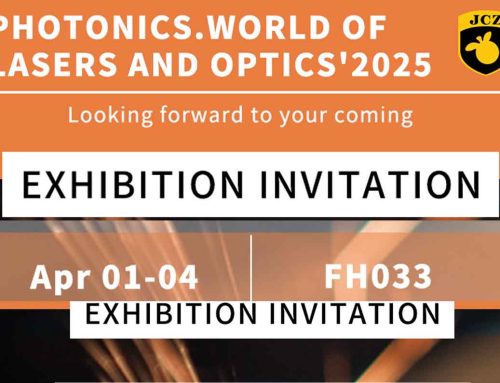Introduction
In today’s rapidly evolving manufacturing industry, precision and efficiency are paramount. Laser technology has become the go-to solution for many applications, ranging from engraving delicate designs to marking various materials. At the heart of every effective laser system is a high-quality controller, responsible for managing the precise movements and operations of the laser. In this article, we will focus on CO2 laser controllers, laser engraving controllers, and laser marking controllers, exploring how they contribute to the success of laser-based projects.
What is a Laser Controller?
A laser controller is the command center for a laser machine, dictating how the laser beam moves, the intensity, and timing of operations. It is essentially the brain of the laser system, interpreting design files and translating them into precise laser movements. A well-designed controller not only boosts efficiency but also ensures high precision in cutting, engraving, or marking processes.
CO2 Laser Controllers
CO2 laser controllers are specially designed for CO2 laser machines, which are widely used in cutting, engraving, and marking applications on materials like wood, acrylic, leather, and plastics. These controllers manage the operation of CO2 lasers, enabling precise control over power, speed, and focus.
Key Features of CO2 Laser Controllers:
- High Precision Control: CO2 laser controllers offer precise control over laser intensity and movement, making them ideal for intricate and detailed designs.
- Compatibility with Various Materials: These controllers are capable of handling a wide range of materials, allowing users to easily switch between different projects.
- Real-time Feedback: Many CO2 laser controllers provide real-time feedback, displaying data such as laser power, cutting speed, and temperature to ensure optimal performance.
- User-friendly Interface: Modern CO2 laser controllers often come with an intuitive interface, making them accessible even for beginners.
Laser Engraving Controllers
Laser engraving controllers are designed to manage the detailed engraving process, offering precise control over engraving depth, line thickness, and speed. These controllers are essential for creating complex patterns, texts, and logos with accuracy and clarity.
Benefits of Laser Engraving Controllers:
- Fine Detail Management: Laser engraving controllers can control very fine details, allowing for high-resolution engraving on various surfaces.
- Versatile Design Options: With engraving controllers, users can input and modify various design files, such as SVG, DXF, and BMP formats.
- Layer Management: Advanced engraving controllers support multi-layer designs, enabling intricate projects with different depths and textures.
- Parameter Customization: These controllers allow for the precise adjustment of engraving parameters based on the type of material being used, ensuring consistency and quality.
Laser Marking Controllers
Laser marking controllers are specialized devices designed to control the process of marking various materials, including metals, plastics, and ceramics. They are commonly used for industrial applications where durability and clarity of the mark are crucial.
Advantages of Laser Marking Controllers:
- High-Speed Operation: Laser marking controllers are optimized for speed, making them ideal for high-volume production environments.
- Durable Marking Quality: They ensure the creation of permanent and durable marks that resist wear, corrosion, and high temperatures.
- Wide Material Compatibility: These controllers are designed to mark a variety of materials, ensuring versatility in different industries.
- Advanced Software Integration: Many laser marking controllers come with software integration for design editing, serialization, and data import, making them suitable for complex marking projects.
Choosing the Right Laser Controller
Selecting the right laser controller depends on the specific needs of your project. Here are some factors to consider:
- Project Complexity: For intricate designs or high-precision projects, a controller with advanced path optimization and detailed control is essential.
- Material Type: Different controllers are better suited for specific materials. Ensure that the controller supports the material types you will be working with frequently.
- Software Compatibility: Check that the controller is compatible with your preferred software, whether for engraving, marking, or cutting, to ensure a smooth workflow.
- Ease of Use: A user-friendly interface can make a significant difference, especially for those who are new to laser technology.
Tips for Optimizing Laser Controller Performance
- Regular Firmware Updates: Keep your controller’s firmware up to date to benefit from the latest features and improvements.
- Calibrate the Laser Properly: Proper calibration of the laser’s power, speed, and focus is crucial for achieving the best results. Use the controller’s built-in calibration tools to fine-tune settings.
- Choose Quality Design Files: High-quality design files are essential for accurate results. Make sure to use vector files when possible for the best precision in engraving or marking.
- Maintain the Laser System: Regularly clean and maintain your laser machine to ensure the controller’s commands are executed precisely, avoiding any interference from dust or debris.
Conclusion
Laser controllers, whether for CO2 lasers, engraving, or marking, are crucial components that determine the quality and efficiency of laser operations. By choosing the right controller, optimizing settings, and maintaining your system, you can ensure consistent high-quality results in all your laser projects.
Investing in a reliable controller is not just about improving efficiency—it’s about achieving the level of precision and durability that sets your work apart.
Whether you are a hobbyist or a professional, understanding the capabilities of your laser controller can elevate your laser projects to new levels of excellence.






